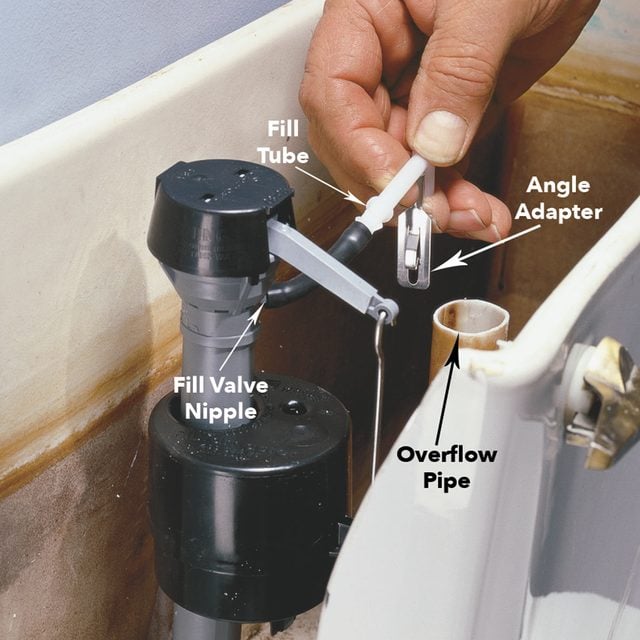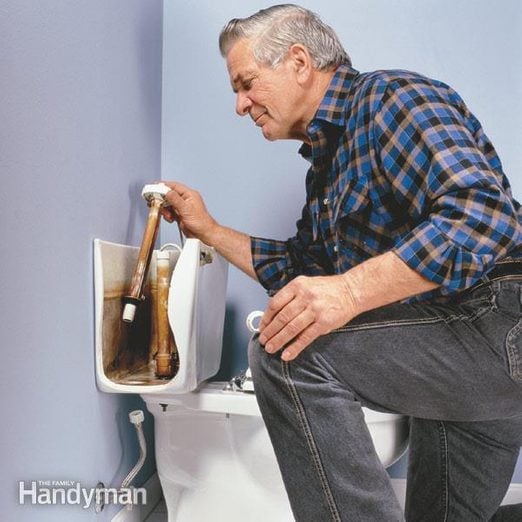How to Fix a Running Toilet
Updated: Apr. 21, 2024
Check inside the toilet tank for a leaky flapper, bad fill valve, or overflow pipe at the wrong height.
An hour or less
Beginner
Less than $20
Introduction
Fixing a running toilet is easier than you might think. In this article, we'll show you how to identify the problem part of the toilet and how to fix it. Don't be intimidated by the plumbing. The fixes are straightforward, even if you don't have any plumbing experience. Conserve water and fix the toilet!Why Is the Toilet Running?
When water is escaping from the toilet tank somewhere or a component inside the toilet is leaking, the toilet will continue to run. Generally, this is caused by a leaking flapper, a defective fill valve, or an incorrectly sized overflow pipe. This article will walk you through the solutions to each of these issues, which are not only simple to apply, but will also result in immediate savings on your next water bill.Tools Required
- Hacksaw
- Pliers
Materials Required
- May need new fill valve
Project step-by-step (5)
Step 1
Test the Flapper
- Push down on the flapper with a stick when you hear the toilet water running and listen for it to stop.
- If it stops, you know the flapper isn’t sealing properly. Replace the toilet flapper immediately.
- Check the fill tube length and cut it back so it’s at least 1/2-inch above the water line.
- To replace the flapper, first shut off the water supply valve under the toilet (or the main shut off valve if the toilet’s valve leaks!). Check out these tips to fix a leaking toilet.
- Flush the toilet to drain out most of the water, then unhook the old flapper.
- Buy a new flapper of the same type and install it according to the instructions on the package.
- Hook the flapper chain onto the flush lever arm so there’s a little slack when the flapper is closed.
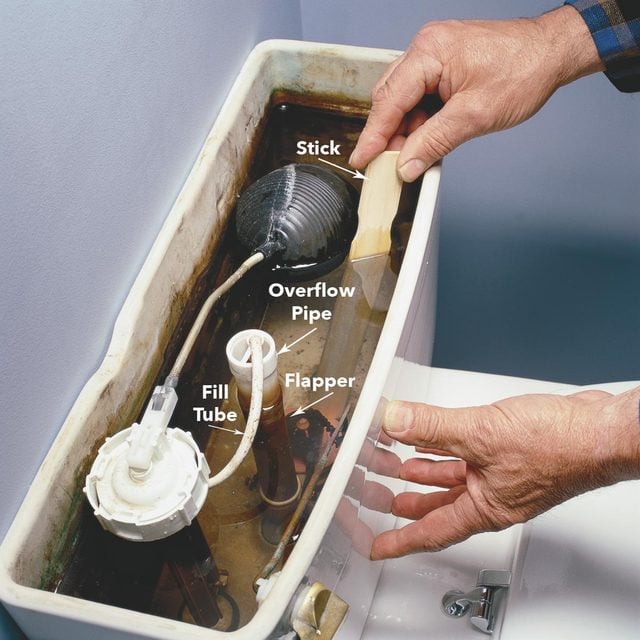
Step 2
Check the Fill Valve for a Leak
- Flush the toilet and look for a fill valve leak.
- Lift up on the toilet float arm when the tank is filling to see if the water stops.
- Bend or adjust the toilet float arm so the tank stops filling when the water level is 1/2- to one-inch below the top of the overflow pipe.
- If the fill valve still leaks, replace it as shown in the next photo.
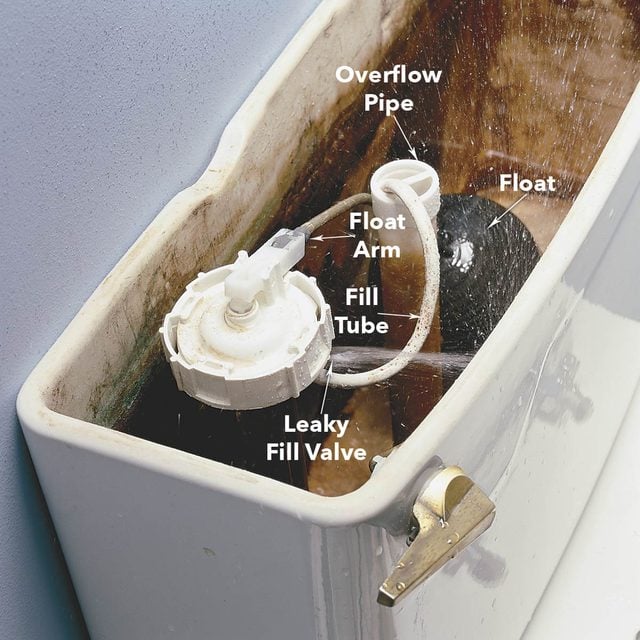
Step 3
Remove and Replace Old Toilet Fill Valve
- Turn off the water supply, flush the toilet and sponge the remaining water from the tank.
- Disconnect the water supply line, unscrew the fill valve locknut and lift out the old fill valve.
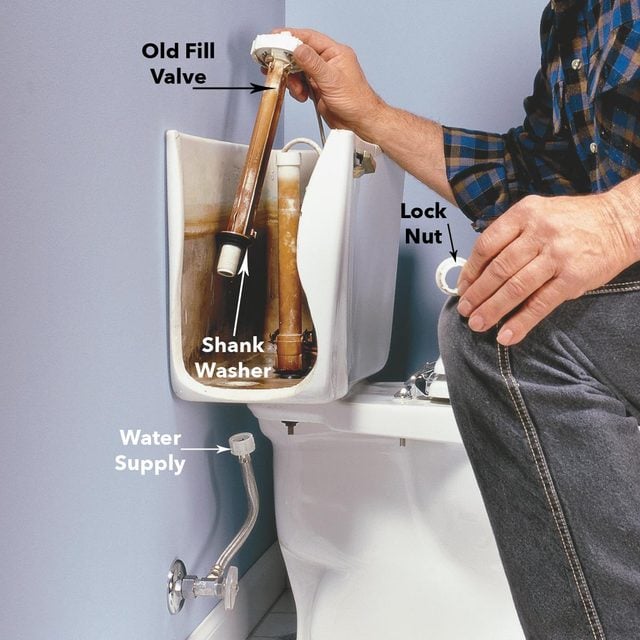
Step 4
Install the New Fill Valve
- Insert the new fill valve into the tank according to the instruction sheet and tighten the locknut a half turn past hand tight.
- If the fill valve is at its maximum height, but the overflow pipe is still higher than the critical level mark, shorten the overflow pipe using a hacksaw so it’s one inch lower than the critical level mark on the fill valve.
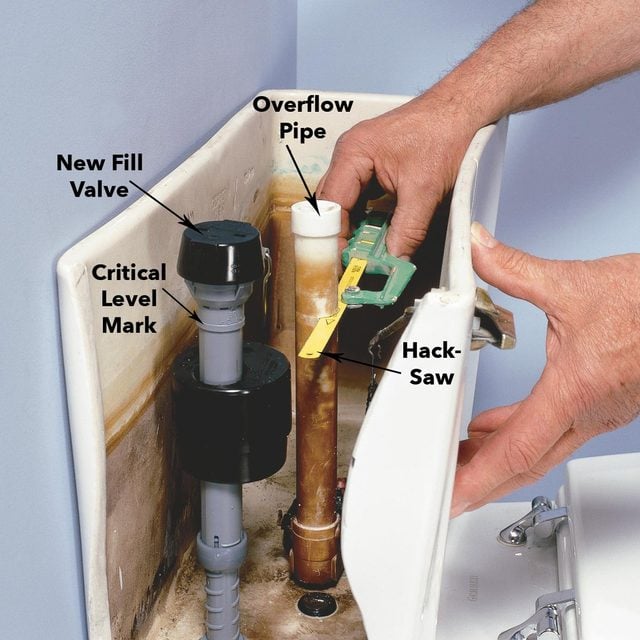
Step 5
Connect the Fill Tube
- Attach one end of the new fill tube to the fill valve nipple and the other to the enclosed angle adapter (shorten the tube to avoid kinks, if necessary).
- Clip the angle adapter onto the overflow pipe.
- Finish the installation by attaching the flapper chain to the flush lever as described above.
- Turn on the water and test-flush the toilet. Here’s what you need to know about the various toilet flush valve types.
